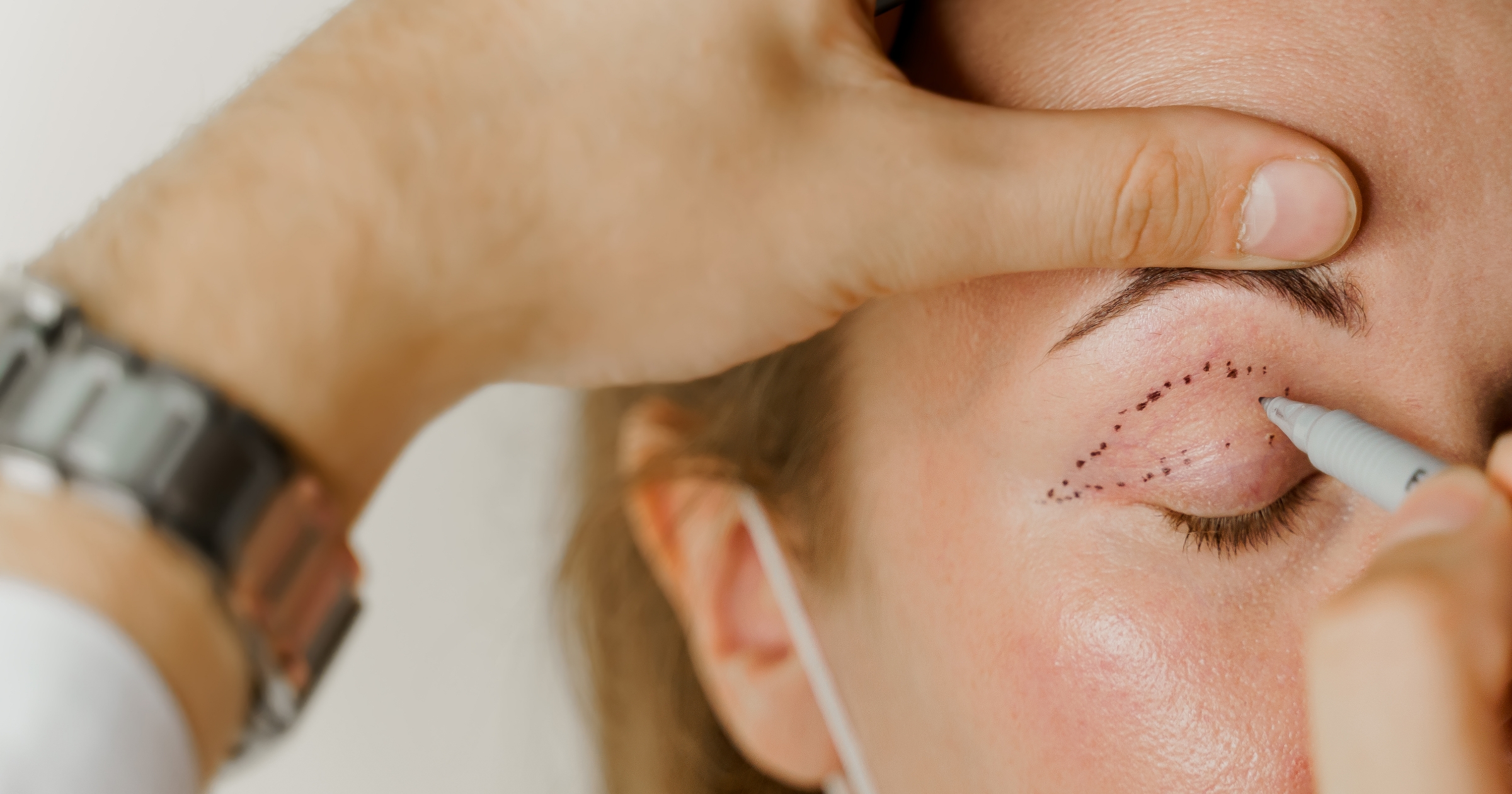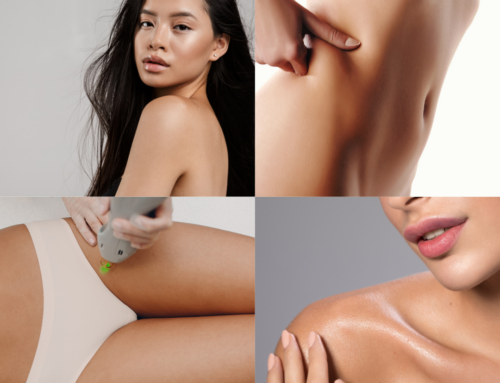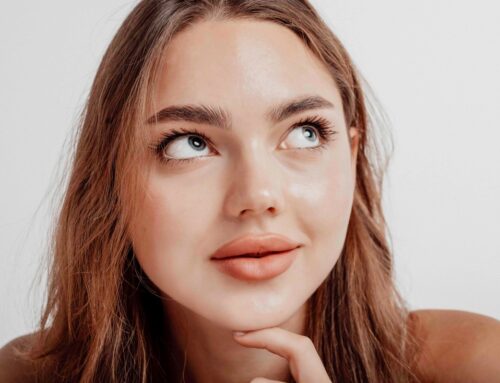How To Qualify For Eyelid Surgery? Your Full Guide To Medicare Rebates

As we age, our skin naturally loses collagen and elastin, decreasing strength and elasticity. Whilst our skin sags virtually everywhere, it’s common to feel the impacts of ageing on your facial skin more than other parts of your body.
This isn’t just because ageing facial skin may alter your self-perception, but because it may even alter your quality of life. For example, many older patients seek upper blepharoplasty treatments (or upper eyelid surgery) to correct excess eyelid skin that droops to the point where it compromises your peripheral vision or causes a visual field defect. Patients who require a blepharoplasty for recorded clinical reasons may be eligible to receive a Medicare rebate of up to 75% of the procedure costs covered.
Alongside being a corrective surgery, however, blepharoplasty can also be secured for cosmetic purposes, or by patients who are looking to restore the shape of their eyelids and eyelid folds. But are these patients also eligible for the upper blepharoplasty Medicare rebate? We’ll be answering just that question today by delving deeper into the process of securing eyelid surgery under Medicare in Australia.
In this short guide, you will learn:
- Different Types of Blepharoplasty
- Medicare Criteria for Blepharoplasty Rebates
- Who Does Not Qualify for Eyelid Surgery?
- How to Book Eyelid Surgery?
The different types of blepharoplasty
If you’ve already looked into eyelid surgery Medicare rebates in Australia, then you probably already know that there are actually two different types of blepharoplasty covered under the Medicare system. These are upper and lower blepharoplasties. But did you know that there are actually 5 different types of blepharoplasty procedures?
These are:
- Upper blepharoplasty – performed to correct the upper eyelid.
- Lower blepharoplasty – performed to correct the lower eyelid.
- Bilateral eyelid surgery – performed to correct both the upper and lower eyelids in a combined procedure.
- Double eyelid surgery – performed to correct monolid eyelids, or patients (typically of East Asian descent) who have epicanthic folds. Double eyelid surgeries are designed to create natural looking folds (or supratarsal creases) that pull eyelids higher and make the eyes look larger.
- Transconjunctival eyelid surgery – performed to remove excess fat pockets situated around the eyelid and to correct pronounced eye bags.
Both upper and lower blepharoplasties tend to be completed faster than the latter three, with these first two surgeries typically only taking 1-2 hours from start to finish. Contrastingly, bilateral eyelid surgeries can take upwards of 3 hours, as precise incisions will need to be made on both eyelids. These incisions are typically made within the eyelid’s natural crease to reduce the likelihood of visible scarring.
Like the other types of blepharoplasty procedures, both double eyelid and transconjunctival eyelid surgery may involve surgeons making precise incisions to excise fatty tissue and loose skin. These unique blepharoplasty procedures may also, however, involve using the double suture and twisting technique (or DST), a process of strategically placing sutures to compress the eyelid in order to create a more natural crease.
Medicare criteria for Blepharoplasty rebates
If you believe that you could benefit from securing one of the five different types of blepharoplasty procedures for clinical reasons, then you may be eligible to receive a Medicare rebate on your eyelid surgery.
As we mentioned, however, the Medicare Benefits Schedule coverage for eyelid surgery is designed only to offer support for those that meet their defined patient criteria. Here is the Medicare criteria for eligibility to receive the Blepharoplasty (Eyelid surgery) Medicare rebate:
- Patients with obstructed peripheral vision (i.e. a visual field defect) as verified by an optometrist or ophthalmologist.
- Patients with fat herniation that results in exophthalmos (bulging or protruding eyeballs).
- Patients with facial nerve palsy.
- Patients whose excess eyelid skin or tissue has caused an intertriginous inflammation of the eyelid that has further risks of developing infection.
- Patients with post-traumatic scarring.
- All patients who may be eligible under these criteria must also possess medical records that support the above conditions. This means developing photographic and diagnostic imaging assets that clearly demonstrate the patient’s need for a clinical blepharoplasty procedure.
All patients who may be eligible under these criteria must also possess medical records that support the above conditions. This means developing photographic and diagnostic imaging assets that clearly demonstrate the patient’s need for a clinical blepharoplasty procedure.
Who does not qualify for eyelid surgery?
As the Medicare Benefits Schedule is designed to only provide rebates for clinical procedures, any patients that are looking to schedule a blepharoplasty procedure for non-therapeutic cosmetic purposes are unfortunately unlikely to be eligible for the rebate. There is, however, every chance that your blepharoplasty specialist or ophthalmologist may be able to diagnose you with one of the conditions listed above during your preliminary blepharoplasty consultation.
If you are able to receive a diagnosis and have photographic or diagnostic images that support that diagnosis, then you will be able to apply for the eyelid surgery Medicare rebate with the support of your trusted healthcare professionals.
So if you have reason to believe that your sagging or drooping eyelids is obstructing your vision, or causing skin irritation or inflammation, then let your GP know prior to consulting your blepharoplasty specialist, as your GP will help determine whether the procedure is medically necessary. Disclosing this information may help you attain the eyefold surgery Medicare rebate and save up to 75% of the costs associated with your blepharoplasty procedure, with the rebate coverage depending on a range of factors (including whether you’ll be undergoing the procedure at a private or public hospital).
How to book your Blepharoplasty consultation with Pirk?
As is the case with securing any clinical or cosmetic procedure, patients should always ensure that their selected specialist and clinic can provide the results they’re looking for. It definitely pays to do a little independent research to find the best blepharoplasty clinicians in your region prior to finalising your preliminary consultation.
That’s precisely where Pirk comes into the picture. Our innovative Pirk Cosmetic Consultation Service is designed to connect you directly with the most suitable surgeons in your area, cutting down hours of research time into mere minutes.
And if your surgeon has been selected from our Pirk network, you can easily book your preliminary consultation via Pirk’s Cosmetic Consultation Service. For even more added value, our Pirk Cosmetic Consultant can provide you with a list of questions to ask your blepharoplasty surgeon at your preliminary consultation, as well as on the day of your procedure, and once you’re post-op.
Experience the Pirk difference by booking your blepharoplasty consultation with us today. Simply contact the Pirk team via our convenient web form to get started or reach us at 1300 114 426 to schedule a Discovery Call today.
The information presented in this blog and on the Pirk’s website is intended for general informational purposes only and should not be considered professional advice. While we collaborate with qualified surgeons, we are not medical specialists, and the content provided is of a general nature. It is strongly recommended to seek personalised professional advice tailored to your specific situation.
If assistance in finding a qualified surgeon is needed, Pirk can offer support. This content does not constitute personal advice, diagnoses, or treatment plans. By reading our blogs, you acknowledge and accept these terms. For further assistance or clarification, please contact us at hello@pirk.au.

